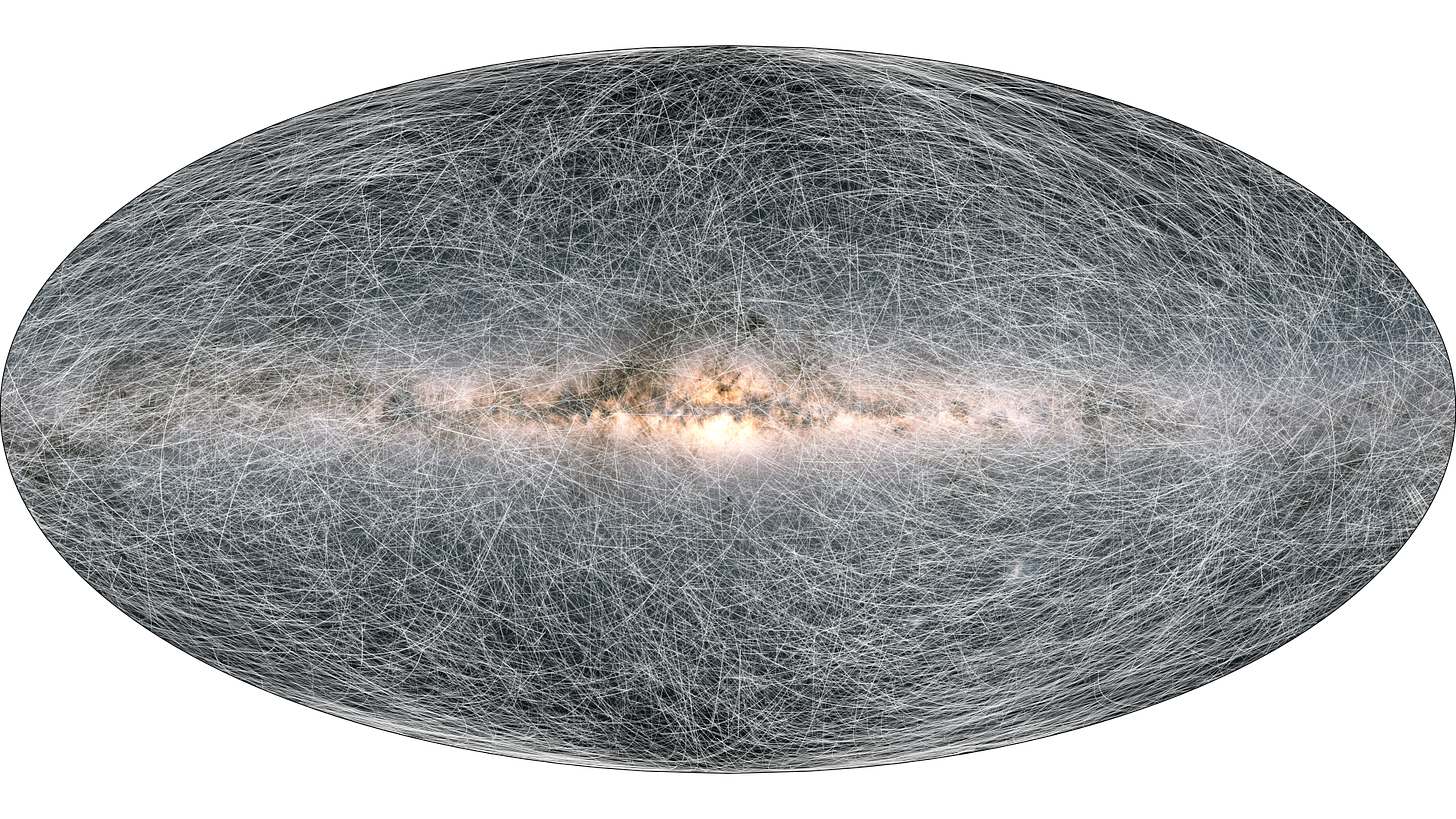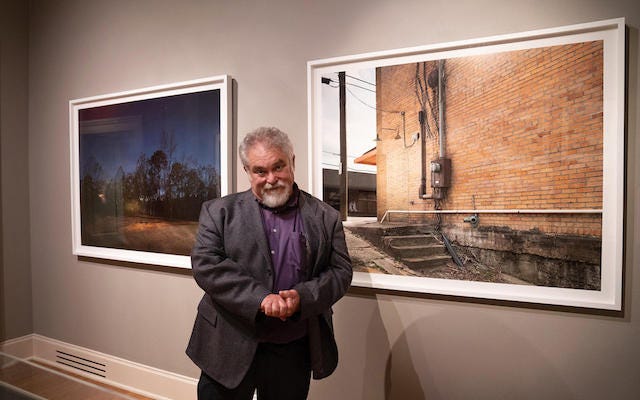The Weird Times: Issue 30, December 6, 2020
Our dreams drink coffee with us as they put their arms around
our children. They laugh with us at our poor falling-down
selves and as we put ourselves back together once again at the
table.
—Joy Harjo, “Perhaps the World Ends Here,” from The Woman Who Fell From the Sky, 1994
“Keep doing what you’ve been doing, because you did it before, and you didn’t die” — Kate Murphy, “Pandemic-Proof Your Habits,” New York Times, Nov 29, 2020
“[I]t feels like we are watching ... a president-elect and a president who are on Earth One and Earth Two. And at this particular Earth that is in reality, it was very normal, very sedate. And it was welcoming news. It was good to watch. It was good to actually get content. We heard no fake news. We heard no conspiracy theories. We heard no personal grievances. We heard a President-Elect and a vice president who want to work with the other side.” —Don Lemon, CNN, Dec 3 2020 after watching Jake Tapper’s interview with Harris and Biden.
+++
“Economists are of two minds (at least!) about the economic effects of deficits and the federal debt, but there is one very clear political meaning to them. This pattern of government spending and taxation since 1981 has moved wealth upward dramatically. In 1979, the top 1% of Americans held 20.5% of the nation’s wealth. In 1989 the top 1% held 35.7%. By 2017, the top 1% owned 40% of the country’s wealth, more than the bottom 90% combined. The top 20% in 2017 owned 90% of the wealth, leaving just 10% for the remaining 80%. The bottom 20% of Americans have no wealth; they are in debt.
When Republicans today say they are going to turn their attention back to the deficits and the debt, what they are saying is that they intend to continue to cut taxes. Then they will blame the Democrats for being fiscally irresponsible when they call for the infrastructure and social welfare spending that used to keep the American economic playing field somewhat level.” Heather Cox Richardson, Letters from an American, Nov 29, 2020
+++
The Virus is Devastating the U.S. and Leaving an Uneven Toll, The United States saw the most new coronavirus cases of the pandemic on Friday, with deaths and hospitalizations also rising. Underlying conditions largely determine who survives, Manny Fernandez, Julie Bosman, Amy Harmon, Danielle Ivory, Mitch Smith, New York Times, Dec 4, 2020
“On Friday, a national single-day record was set, with more than 226,000 new cases. It was one of many data points that illustrated the depth and spread of a virus that has killed more than 278,000 people in this country, more than the entire population of Lubbock, Texas, or Modesto, Calif., or Jersey City, N.J.
“It’s just an astonishing number,” said Caitlin Rivers, a senior scholar at the Johns Hopkins Center for Health Security. “We’re in the middle of this really severe wave and I think as we go through the day to day of this pandemic, it can be easy to lose sight of how massive and deep the tragedy is.””
+++
Amazon, General Motors, Walmart and more call climate action a ‘business imperative’, Catherine Thorbecke, ABC News, Dec 2, 2020
Dozens of leading U.S. companies penned a letter Wednesday urging President-elect Joe Biden and lawmakers to re-enter the nation into the Paris Climate Agreement and to enact "ambitious" solutions to tackle climate change.
The letter was signed by 42 companies, including Amazon, General Motors and Walmart. The companies "view climate action as a business imperative," the letter said.
…
“Leveraging American investment and innovation toward the technologies of tomorrow will create jobs, drive growth, and strengthen U.S. competitiveness," the letter said. "Near-term climate actions can contribute significantly to our economic recovery.”
+++
Mustafa Santiago Ali describes the path forward for environmental justice, Carl Segerstrom, High Country News, Dec 3, 2020
A cap-and-trade system to cut toxic air emissions; a bipartisan agreement to strengthen the Clean Air Act; a federal program to ease the unjust burden of pollution in minority communities: All this sounds like an environmental to-do-list for President-elect Joe Biden. But it’s actually a list of federal actions taken by the George H.W. Bush administration in the early 1990s.
During Bush’s tenure, Mustafa Santiago Ali, then 16-years-old, joined the Environmental Protection Agency as part of a program to get students from minority communities more involved in environmental issues. Over the his 24-year career with the EPA, Santiago Ali helped lead the agency’s environmental justice programs, working to undo the toxic burden of pollution in minority, Indigenous and poor communities.
“A set of opportunities I definitely want to highlight is: How are we going to properly engage young people? All these incredible young leaders across the country have invested so much in trying — whether it’s environmental justice or the climate crisis — to get actions and solutions in place.”
+++
UN calls on humanity to “end war on nature,” go carbon free, Seth Borenstein and Frank Jordans, AP, Dec 2, 2020
“I firmly believe that 2021 can be a new kind of leap year — the year of a quantum leap towards carbon neutrality,” Guterres said.
But he said the two U.N. reports Wednesday “spell out how close we are to climate catastrophe.”
When countries spend trillions of dollars to recover from the pandemic-triggered economic slowdown, Guterres said they must to do so in a way that emphasizes clean energy.
Nations should stop funding and subsidizing fossil fuels, he said. And countries need to fulfill their Paris promise to spend $100 billion annually to help poorer countries develop cleaner energy.
Guterres said there’s no way the world can curb the climate change “without U.S. leadership” and urged students and other Americans to do “everything you can” to get their governments to curb emissions more quickly.
“Human activities are at the root of our descent towards chaos,” Guterres said. “But that means human action can solve it.”
+++
Hydrogen is a trillion dollar bet on the future, David Fickling, Bloomberg, Dec 2, 2020 (part one of a three part series)
The world is on the brink of what may turn out to be its most important energy experiment.
If proposals to build a new industry producing so-called green hydrogen succeed, we may have the final piece of the puzzle to prevent devastating climate change. If they fail, we may be about to spend hundreds of billions of dollars on a white elephant.
That’s why there’s both excitement and trepidation around the run of dramatic hydrogen announcements from Europe, Australia and Chile in recent months. The European Union alone envisages spending as much as 470 billion euros ($558 billion) on green hydrogen by 2050. To shift the whole world in the same direction would cost at least twice as much.
A viable green-hydrogen industry could power production of steel, cement and fertilizers; fuel trucks, trains, ships and aircraft; and balance wind- and solar-based power grids — and in the process eliminate roughly a quarter of the world’s carbon dioxide emissions. Such a prospect would help decarbonize parts of the economy that wind and solar aren’t well-placed to reach. It would also provide a potent new source of demand for the zero-carbon electricity that powers electrolyzer cells, splitting water into oxygen and green hydrogen.
+++
Fences have big effects on land and wildlife around that world that are rarely measured, Alex McInturff, Christine Wilkinson, Wenjing Xu, The Conversation, Nov 30, 2020
Perhaps the most striking pattern we found was that fences rarely are unambiguously good or bad for an ecosystem. Instead, they have myriad ecological effects that produce winners and losers, helping to dictate the rules of the ecosystems where they occur.
Even “good” fences that are designed to protect threatened species or restore sensitive habitats can still fragment and isolate ecosystems. For example, fences constructed in Botswana to prevent disease transmission between wildlife and livestock have stopped migrating wildebeests in their tracks, producing haunting images of injured and dead animals strewn along fencelines.
Enclosing an area to protect one species may injure or kill others, or create entry pathways for invasive species.
One finding that we believe is critical is that for every winner, fences typically produce multiple losers. As a result, they can create ecological “no man’s lands” where only species and ecosystems with a narrow range of traits can survive and thrive.
This is the most precise 3D map of the Milky Way ever made, Neel V. Patel, MIT Technology Review, Dec 3, 2020
Data collected by the European Space Agency’s Gaia observatory has been used to create the most detailed 3D map of the galaxy ever made. The new data set could help scientists unravel many mysteries about the universe’s expansion and the solar system’s future.
+++
Fisheries in a flask? Loose DNA in seawater offers a new measure of marine populations, Erik Stokstad, Science Magazine, Dec 3, 2020
A large study published today boosts confidence that environmental DNA (eDNA) could become a reliable indicator of the abundance of fish. “There is more and more evidence,” says Einar Nielsen, a geneticist at the Technical University of Denmark, who was not involved in the work. But additional research is needed before the technique can be put into practice, he and other experts say.
eDNA comes from cells that organisms leave behind when they lose tiny flakes of skin, shed mucus or saliva, defecate, or die and decompose. Fragments of DNA persist in water for days or longer, and they can tip researchers to the presence of a particular species. Because the bits of DNA swirl and drift in water, a small sample can reveal which fish inhabit a lake, river, or marine environment. The technique can indicate whether an endangered species persists in a headwater stream, for example, or whether an invasive fish has reached a new lake.
+++
Why the Navy is Becoming a Powerful Force for Green Energy: As the pandemic highlights fragile supply chains, the Navy is working with Hawaii to harness the sun and other natural elements for power, Kevin Knodell, Civil Beat, Dec 1, 2020
As the Navy looks to the future of its operations in the Pacific, it’s increasingly exploring renewable energy and other new technologies to get the job done. That gives it something in common with Hawaii.
For years the military has opened up space on island bases to local utility companies to develop energy generation projects, including solar and wind farms, that provide power to both civilian customers and the bases themselves.
In October, Naval Facilities Engineering Command Hawaii began soliciting renewable and fossil fuel-based proposals from developers to plan, finance, construct, own, operate and maintain an energy generation system and storage system on about 160 acres of land at Joint Base Pearl Harbor-Hickam.
As American Kestrels Mysteriously Decline, Researchers Look to their Migration for Clues, Chad Witko, Audubon, Nov 20, 2020
Sadly, the American Kestrels now face similar threats other raptors did during the second half of the 20th century. Formerly one of our most plentiful birds of prey, the kestrel is declining across portions of its range, sometimes in devastating numbers. In recent decades, more than 90 percent of kestrels have disappeared from New England's pastoral landscapes. These rates of decline are on par with the painful losses suffered by the kestrel’s larger cousin, the Peregrine Falcon, in the decades following World War II. Thankfully, some researchers are starting to break through the fog after analyzing prior data. The American Kestrel Partnership, a project of The Peregrine Fund, is one such group of scientists. Now, it believes the key to understanding the kestrel’s decline lies in their wintering grounds or during migration.
+++
Dolly Parton helped fund a Covid vaccine. This is not the first time she saved us. Jessa Crispin, The Guardian, Dec 1, 2020
Back in April – while the Trump administration was still downplaying the risks of the coronavirus, and churches and religious organizations were lobbying for the right to hold super-spreader events and infect their congregations, and terrible people were stockpiling masks and hand sanitizer in the hopes of profiting from mass death – the singer made a $1m donation to Vanderbilt University medical center. The donation, just one of a few such donations she’s made to Vanderbilt over the years, was used to fund research for the Moderna vaccine, currently testing at 94.5% effective. (Why it is still being called the Moderna vaccine and not The Dolly I do not understand.)
…
We shouldn’t need our artists to be better than us ethically as well as creatively. It’s wonderful and kind that Dolly gives so much of her time and wealth to those less fortunate than her. She grew up in the kind of material deprivation that often creates a kind of cruel selfishness, or a lifelong vulnerability, but occasionally crystallizes into moral clarity. What she lived without – and she was one of 12 children born to illiterate parents who lived in a one-room cabin in the Smoky Mountains of Tennessee, so she lived without a lot – seems to have guided her to the decision that no one else should have to.
So she set up the Imagination Library, a charity that gives free books to children all over the world. When wildfires tore through Tennessee in 2016, she set up a fund to give families who lost their homes $1,000 a month to help them get back on their feet. The charity, called My People, still gives grants and donations to firefighters and rebuilding efforts. She risked her career to support HIV/Aids groups when it was still taboo in country music, and she gives away a ton of money to healthcare facilities and organizations.
+++
Amid Tensions in Myanmar, An Indigenous Park of Peace Is Born
The Karen people of eastern Myanmar have long fought for autonomy over their lands. In a bold move, they have turned a war zone into a protected area that respects their cultural traditions and looks to save the Salween, one of the world’s last free-flowing international rivers, Fred Pearce, Yale e360, Nov 30, 2020
Peace is a rare commodity in Myanmar, a country riven by ethnic disputes, ravaged by military overlords, and home to millions of people displaced by conflicts. But in the forested mountains of the country’s remote east, where it borders Thailand, the local Karen people have turned a war zone into a park of peace, centered on one of the last free-flowing international rivers in the world, the Salween.
The Salween Peace Park is being lauded as a model for conservation that draws less on Western science and more on ethnic cultural traditions of foraging for wild foods, taboos on hunting, and forest-friendly farming. In recognition, the Goldman Environmental Prize is being awarded this week to the park’s president and founder, Paul Sein Twa, who calls it “Indigenous self-determination and community protection of natural and cultural heritage.”
+++
Drug reverses age-related cognitive decline within days: Rapid mental rejuvenation in old mice suggests age-related losses may be broadly reversible, Univ Calif-SF, Eurekalert, Dec 1, 2020
Just a few doses of an experimental drug can reverse age-related declines in memory and mental flexibility in mice, according to a new study by UC San Francisco scientists. The drug, called ISRIB, has already been shown in laboratory studies to restore memory function months after traumatic brain injury (TBI), reverse cognitive impairments in Down Syndrome , prevent noise-related hearing loss, fight certain types of prostate cancer , and even enhance cognition in healthy animals.
In the new study, published December 1, 2020 in the open-access journal eLife , researchers showed rapid restoration of youthful cognitive abilities in aged mice, accompanied by a rejuvenation of brain and immune cells that could help explain improvements in brain function.
“ISRIB's extremely rapid effects show for the first time that a significant component of age-related cognitive losses may be caused by a kind of reversible physiological “blockage” rather than more permanent degradation,” said Susanna Rosi , PhD, Lewis and Ruth Cozen Chair II and professor in the departments of Neurological Surgery and of Physical Therapy and Rehabilitation Science.
“The data suggest that the aged brain has not permanently lost essential cognitive capacities, as was commonly assumed, but rather that these cognitive resources are still there but have been somehow blocked, trapped by a vicious cycle of cellular stress,” added Peter Walter , PhD, a professor in the UCSF Department of Biochemistry and Biophysics and a Howard Hughes Medical Institute investigator. “Our work with ISRIB demonstrates a way to break that cycle and restore cognitive abilities that had become walled off over time.”
+++
The way we express grief for strangers is changing: Online memorials are just one of the ways people are trying to comprehend the scale of our loss during the pandemic. Tanya Basu, Technology Review, Dec 3, 2020
This year’s remote life has shown that physical distance doesn’t have to be a barrier to empathy. “There’s a desire to move death to a technological solution to help people meaningfully experience and understand what is quite distant right now,” Pitsillides says. “Millions of people are dying, but mobile phones are a vehicle to make those people more real, to use these spaces to create eulogies, to record and take pictures.”
As I write this, approximately 275,000 Americans have died from the coronavirus, and nearly 1.5 million people in the world have succumbed to the disease. Online memorials are, perhaps ironically, helping the living grasp the humanity behind these extraordinary numbers.
+++
Inside the White Supremacist Global Network, David Ignatius, Washington Post, Dec 1, 2020
Violent white-supremacist groups have formed a connected global movement that rose before Donald Trump’s presidency and threatens to continue long after he leaves office.
These white-supremacist groups have used the Internet to recruit and train followers, much as Islamist extremists did a decade ago, argues a major new study by Jigsaw, a research arm of Google.
We can all restore First Amendment freedoms to their rightful place in America, Jessica Bohrer and Sanford Bohrer, Miami Herald, Dec 2, 2020
How can we change course and get back to a place where we truly value and embrace freedom of speech as a country and as a community? Children are not born with hate, bigotry or intolerance. They are taught their values by parents, teachers and leaders in their communities. That is why it is so important that we begin to teach children about the power of using their voices and the importance of protecting free speech when they are young.
Jessica and Sanford Bohrer are authors of Your Voice is Your Superpower
+++
Beneath the Waves
This is a time when we
summon tears
that don't come,
grief hiding like the current
that pulls a body
beneath the waves.
This is a time when a smile
may not be a smile
even in translation
but a stand-in for where
our eyes would go if they
were open to a future tense.
Be afraid, very afraid: is the
mantra of those who
benefit from our despair.
Breathe, breathe deep
whisper those
who have been here before.
--Margaret Randall, from STARFISH ON A BEACH: THE PANDEMIC POEMS, Wings Press, 2020
Ghosts of Segregation —photographs by Rick Frishman
Ghosts of Segregation photographically explores the vestiges of America's racism evident in the built environment, hidden in plain sight: Schools for "colored" children, theatre entrances and restrooms for "colored people," lynching sites, juke joints, jails, hotels and bus stations. Past is prologue.
We often take our daily environments for granted, but within even the most mundane edifice may lurk an important bit of history. That stairway apparently to nowhere once went somewhere. The curious palimpsest of bricks covers something. What purpose did they serve? While many of these images are from the Deep South, prejudice has no geographic boundaries, nor is it limited to blacks and whites. Fear and tribalism has led to the stereotyping and dehumanization of many: Hispanics, Asians, LGBTQ, anyone who is perceived as "the other."
Ghosts of Segregation seeks to spark an honest conversation about the legacy of racial injustice in America today. As of August 2019, Ghosts of Segregation consists of 75 images and continues to grow.
If We Make it Through December, sung by Phoebe Bridgers
If we make it through December
Everything's gonna be all right, I know
It's the coldest time of winter
And I shiver when I see the falling snow
If we make it through December
Got plans to be in a warmer town come summertime
Maybe even California
If we make it through December, we'll be fine
Lyrics by Merle Haggard © Sony/ATV Music Publishing LLC
+++
The Weird Times reading list is on Bookshop.org
+++
Biden Clinches Electoral Win as California Certifies, Mark Niquette, Bloomberg News, Dec 4, 2020
Joe Biden now officially has more than the 270 Electoral College votes he needs to claim the presidency after California certified its election results on Friday evening.
Secretary of State Alex Padilla approved the results of Biden’s victory, according to his office, which Democratic Governor Gavin Newsom will use to prepare the Certificate of Ascertainment appointing the state’s 55 electors for Biden.
The electors will meet in their states on Dec. 14 to cast their votes, which Congress will tally in a joint session on Jan. 6.
Dear Friends: We can expect more excitement between now and Dec. 14 and again on Jan. 6. Until the very end of the election process, we can expect the Trump and allied Republican attacks on Democracy to continue. I know I must sound like a broken record at this point, but we cannot assume anything about our now-seemingly fragile democratic institutions. Be prepared for the worst and hope for the best.
And most of all, please keep safe as we continue to suffer through the Trump Pandemic. As of today, we mourn more than 281,000 Americans and over 1.53 million human beings worldwide who have lost their lives to COVID-19.
2,403 Americans died on Dec. 7, 1941. 2,190 of us died on Dec. 5, 2020.









